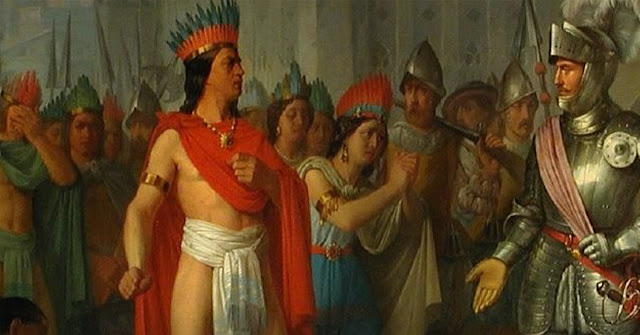Emperor Justin I of Constantinople had quite a rags-to-riches story. He was born into a peasant family around the year 450, but eventually left the life of a commoner behind to join the military. Upon enrollment, Justin was said to have had with him nothing but some bread and the clothes on his back. His fortunes would skyrocket, however, once he started down the path of the warrior; Justin became a member of the palace guard for Emperor Anastasius (r. 491-518) and ultimately became the commander of that force. When Anastasius died without a clear heir in 518, the unlikely Justin became a top contender for the throne. How exactly he cinched his claim to the throne is debated—some say he touted his respected status in the military, while others suggest he used of well-placed bribes—yet, whatever the case, Justin did indeed win the backing of the military and government officials, allowing him to become the next emperor of Constantinople.
Although Emperor Justin I (r. 518-527) had ample military experience, matters of war and national defense were not the only duties of an emperor. He was also expected to oversee the empire’s internal laws and external diplomacy. In these other aspects of government, the new emperor was less well-equipped. Whereas the elite families of Constantinople were educated in such matters and trained in proper calligraphy for legal and diplomatic documents, Emperor Justin did not have that upbringing. Instead, when Justin ascended to the throne, he was said to have been a poor writer, and the words he could write were not aesthetically pleasing. This was a problem, as the emperor was expected to write out a sign of approval on official government decrees and documents.
So as to not embarrass the emperor or the empire, Justin’s officials reportedly developed a way for their uneducated emperor to easily write a perfect signature. According to the historian Procopius (c. 490-565), a high official named Proculus took a small piece of wood and carved in it a regal-looking stencil of the word, “LEGI,” which meant “I HAVE READ.” With this stencil, Emperor Justin I needed only move his pen along the grooves of the wood to create a perfect, professional-looking stamp for state documents. Whether or not he always needed to use the stencil, or if he learned to sign without it is unknown, but it was reportedly brought back into frequent use when Emperor Justin I became too old and ill to function. Procopius unflatteringly described how the emperor’s nephew, Justinian (r. 527-565), and other government officials would help Justin use the stencil when he was too old to write on his own:
“Then they used to dip a pen in the special ink reserved for emperors and place it in the hands of Emperor Justin. Next they took the strip of wood I have described and laid it on the document, grasped the Emperor’s hand and, while he held the pen, guided it along the pattern of the four letters, taking it round all the bends cut in the wooden stencil. Then they went, carrying the Emperor’s writing, such as it was” (Procopius, The Secret History, chapter 6, section 15-16).
Written by C. Keith Hansley
Picture Attribution: (Blanche of Castile and King Louis IX of France, dated to 1220-1230, [Public Domain] via Creative Commons).
Sources:
- The Secret History by Procopius, translated by G. A. Williamson and Peter Sarris. New York: Penguin Classics, 1966, 2007.
- http://penelope.uchicago.edu/Thayer/E/Roman/Texts/Procopius/Anecdota/6*.html
- https://www.britannica.com/biography/Justin-I








